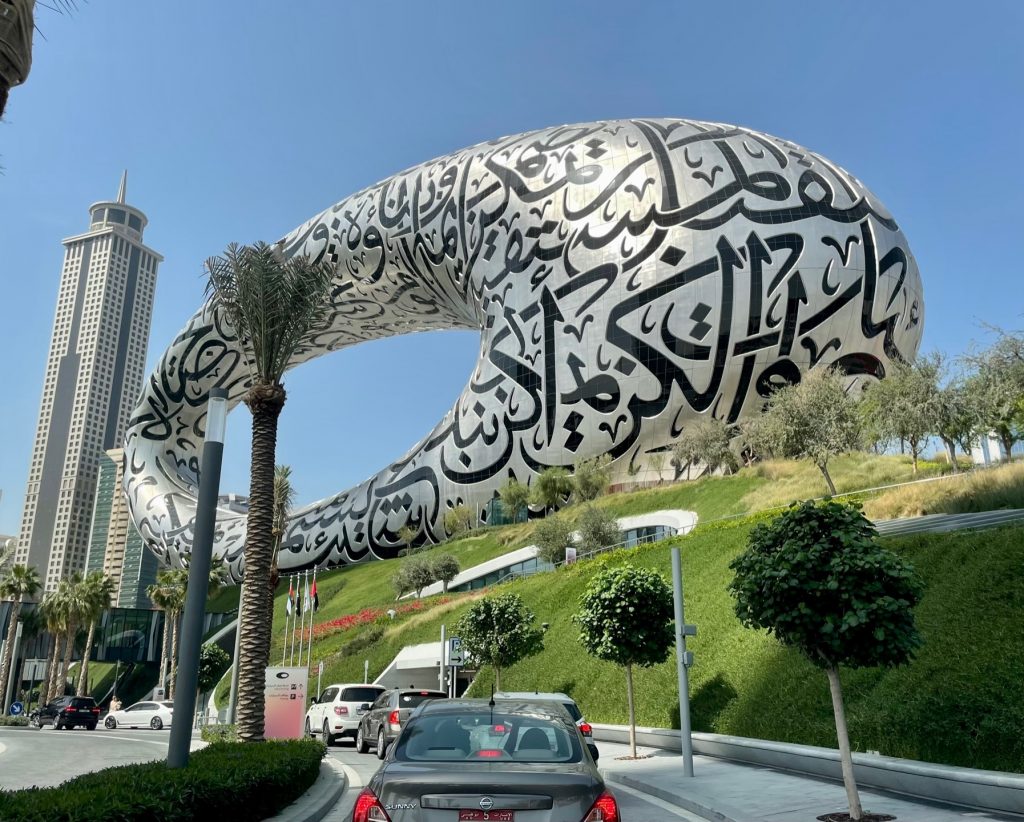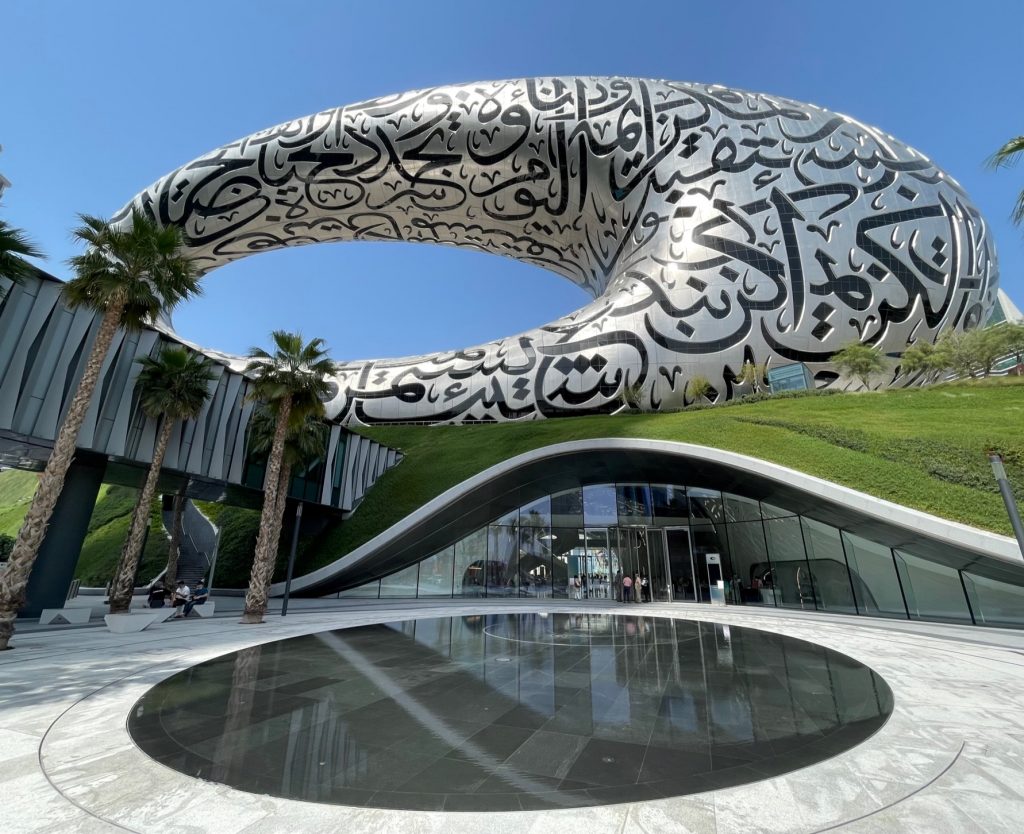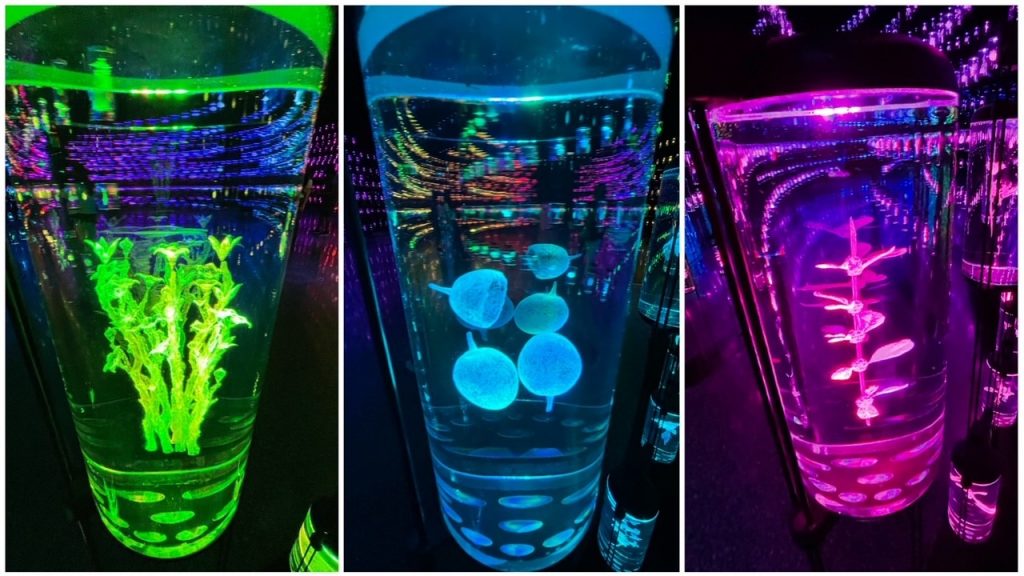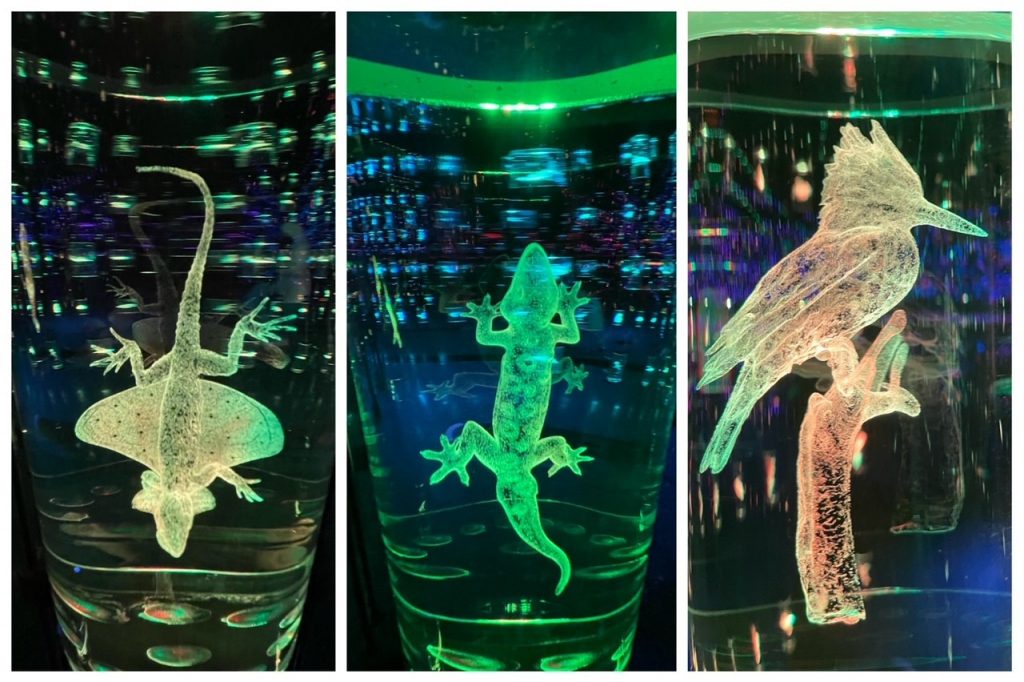Dubai’s New Icon: The Museum of the Future!
The Museum of the Future, the new icon of Dubai!
The museum, which is a marvel of technology and architecture, speaks volumes, even with its name. The people of this country, who aim to bring together the most highly qualified scientists in their field, throughout the world, still dress, eat, drink and have fun as before. In the Museum of the Future, visitors are accompanied by an artificial intelligence guide named “Aya” throughout their trips. Contrary to the West, the vision of the future and technology I see in the Museum of the Future, which was built in a country that adapted to technology and culture of technology much later than Western countries, is utopian, not dystopian. When technology itself is considered as a tool, it is neutral. If you determine the direction of development according to the mission you will impose on it, and develop technology to keep it alive and persevere, it will be for the benefit of humanity and the direction of development will always be towards the good. Commercial company partnerships and products realized on this subject are also exhibited in the museum, which is promising.
In the past weeks, I visited the Dubai World Expo and wrote an article summarizing my visit within the context of Sustainability, Opportunity, and Mobility. On that trip, I said I would talk about my observations of the Dubai Museum of the Future, a building with technology, architecture, and historical background, commissioned by the Dubai Future Foundation. In this article, I would like to talk about this wonderful museum that brings the past to the present and bridges the gap between the future and the past.
Resembling a calligraphic space base when viewed from the outside, the 30 thousand square meter engineering, technology, and architectural marvel of museum speaks volumes, even with its name. Aiming to bring together the most qualified scientists in the world who will build the future of the Emirates in science and advanced technology, it points to the past with calligraphic decorations that shed light on the future, history, and traditions of the country. Bringing the past and the future together in the present time, the museum symbolizes a great challenge in terms of architecture and structural engineering.


Dubai, the most unique part of the United Arab Emirates, has always caught my attention among all the Arab countries I have visited. Isn’t it very interesting that by preserving its own culture, the region is now a center of attraction, not only commercially, but also culturally, for many countries, including those in Europe? However, the people in Dubai still dress, eat, drink and have fun traditionally. They write and speak Arabic. They are rich enough to take a holiday on Friday, Saturday, and Sunday, on the holy days of all three religions, and work only four days a week…
In fact, the situation is more complicated when we look at the alphabet issue around the world; In the former USSR, large masses of people, largely university graduates and intellectuals, were educated with the Cyrillic alphabet. Greeks, Israelis, Indians, Chinese, Japanese, and many more advanced nations, Korea, Taiwan…
40 years ago, I visited Tokyo and Kyoto to compare the westernization journey of the Ottoman Turks, which began with the Young Turks, with a similar journey of similar nations such as Japan. Anyway, my analysis shall stay with me for now.
The first Museum of the Future, which has just opened to display the scientific ideas and projections of the future, has façade of 1,024 stainless steel panels with a 17,600m2 closed area, clad on a 7-floor column-free structure. The exterior of the museum, which is 77 meters high, has 14,000 meters of illuminated Arabic calligraphy. The UAE has been intensely interested in futuristic structures and projects intensely. This structure took 9 years to complete and this museum building, which may potentially be the new symbol of the country, has remarkable features in terms of sustainability as well as its architectural structure and innovative features. Working with 4,000 megawatts of solar energy, the museum also shares an important message about the country’s determination to use clean energy.
Although the United Arab Emirates is known for its striking skyscrapers that emerge from a combination of steel and glass, it also has a very rich fauna. The natural diversity and richness of the country are also reflected on the green plateau outside the museum. The garden area, which hosts 100 tree and plant species, is adorned with trees such as palm, acacia, and cedar, which are best adapted to the climate of the country, and it is also home to endemic bird and bee species.
Each floor of the 7-floor museum, which takes its design from Islamic literature, points to a different theme. Visitors entering the museum feel themselves in the future and outer space on the first three of the 7 floors. The other 3 floors host research institutes and universities focused on big data, robotic technologies, artificial intelligence, and space technologies. The last floor is reserved for children who are the future of the country and science. The museum will lead the way in the development of smart cities, transportation, health, education, and experimental technologies.
In the Museum of the Future, visitors are accompanied throughout their trip by an artificial intelligence guide named “Aya”. The museum invites its visitors on an experiential journey towards 2071, the 100th anniversary of the founding of the United Arab Emirates. On this journey, visitors are accompanied by digital environments created by virtual reality, mixed reality, and augmented reality technologies. 7 interesting experience environments welcome visitors to the experience-oriented museum. (https://museumofthefuture.ae/en/experience)
In A New Moon, you can learn about the future projection of the Moon, which is 400,000 km away from the earth, in the context of renewable energy. In New Explorers, you can observe the work of pioneering societies going to space by traveling to the moon in a spaceship. There is even a shortage of personnel in the virtual environment, so I applied as a spaceship pilot. But there was no answer.
At A Digital Amazon, you learn the invisible details of the rainforest by experiencing them.
In The Vault of Life, an entrance is made to the DNA library created to protect the climate and living species.



At A Spa for The Senses which is a digital life shelter, you experience a breakaway from technology and focus on your soul, body, and health.
At The Centre, on the other hand, you experience contemplation accompanied by water and music, in other words, you live a meditation experience.
When you see different cultures and witness different lives, there are various traces left by that experience in your soul and mind and it becomes more evident over time and can be expressed. A few weeks after my visit to the Museum of the Future, the first thought that occurred in my mind, through my observations and experiences was that there is a great deal of difference between the world’s cultures in technology and their imaginations of the future. In Western literature or technology storytelling, the future is always imagined as dystopian for some reason. Even great blessings such as artificial intelligence and robots that can facilitate the daily life of humans are always portrayed as war tools or robots’ domination, in short, bad and pessimistic stories. Written culture is formed in this direction, and this point of view dominates TV series and movies. I mentioned this issue in the article where I mentioned the movie Dune.. (https://en.muratulker.com/y/the-unknowns-of-the-metaverse-world-are-vast-but-you-must-be-prepared/)
However, our life experience so far, shows the opposite. The Industrial Revolution, the Space Age, the Information Age, and the IoT… have made life easier, increased welfare, and extended the human lifespan. So why do we always imagine pessimistic future in which the creatures we design and develop are hostile and evil? Think about it, the advanced space creatures in movies are always ugly and bad-tempered, even disgusting! If only Freud could explain it…
Constructed in a country that has adapted to technology and the culture of technology much later than Western countries, theimage of the future and technology I saw in the Museum of the Future, unlike the West, is utopian, not dystopian – a better and more efficient world develops in contexts such as co-production, well-being and health. When technology itself is considered a tool, it is neutral. If you determine the direction of development according to a mission that you will impose on it and develop the technology to keep it alive and persevere, it will be for the benefit of humanity and the direction of development will always be towards the good. Commercial company partnerships and products realized on this subject are also exhibited in the museum, which is promising.
While leaving the museum building with these thoughts, I overheard the conversations of the visitors. Asian visitors also evaluated the agonic oval structures of the museum in the context of Feng Shui. I think the effect of the museum on me is not individual but universal.
(Free photos of the museum: https://unsplash.com/s/photos/the-museum-of-the-future )
Note: This article is open source and can be cited by mentioning the author. Does not require copyright.

